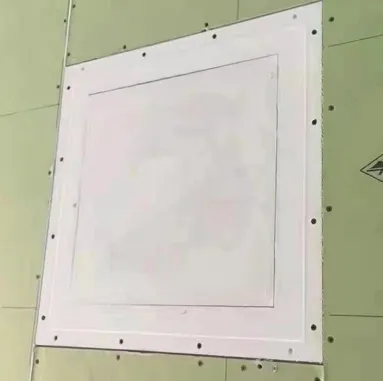Dec . 19, 2024 01:32 Back to list
grid ceiling tiles price
Exploring the Price of Grid Ceiling Tiles A Comprehensive Overview
When it comes to modern interior design and construction, grid ceiling tiles have become an essential component. With their versatility, ease of installation, and aesthetic appeal, grid ceiling tiles are widely used in both residential and commercial spaces. However, one of the most pressing concerns for builders, designers, and homeowners alike is the price of these tiles. Understanding the factors that influence grid ceiling tile prices can help individuals make informed purchasing decisions.
Types of Grid Ceiling Tiles
Grid ceiling tiles come in a variety of materials, sizes, and styles, which can greatly affect their price. Common materials include mineral fiber, fiberglass, metal, and vinyl. Mineral fiber tiles are often the most cost-effective option, typically ranging from $0.50 to $2.00 per square foot. They are ideal for providing sound absorption and fire resistance.
Fiberglass tiles offer a more advanced solution, commonly priced between $2.00 and $5.00 per square foot, and are favored for their durability and aesthetic options. Metal tiles, while often more expensive, provide a contemporary look and can cost anywhere from $3.00 to $9.00 per square foot. Vinyl tiles, known for their moisture resistance and ease of maintenance, fall in a similar price range as metal tiles.
Size Matters
The size of the grid ceiling tiles also plays a significant role in their overall cost. Standard tiles typically come in 2x2 feet or 2x4 feet dimensions. Larger tiles, while available, may come at a premium due to their material and transport costs. Bulk purchases often yield discounts, allowing consumers to benefit from savings while buying more.
grid ceiling tiles price

Design and Aesthetic Influences
The aesthetics of grid ceiling tiles can significantly influence their price. Tiles with intricate designs, patterns, or textures may command higher prices due to the complexity of their manufacturing processes. Customizable options allow homeowners and designers to create unique ceilings that match their vision, but these customizations often come at an increased cost.
Additionally, sustainable or eco-friendly options, which are becoming increasingly popular, may be priced higher than traditional materials. Buyers willing to invest in environmentally friendly solutions can expect to pay more, as these products often reflect higher manufacturing costs linked to responsible sourcing and production methods.
Market Trends and Economic Factors
Like many commodities, the prices of grid ceiling tiles can be influenced by market trends and economic conditions. Supply chain disruptions, changes in manufacturing costs, and shifts in demand can lead to fluctuations in pricing. It is essential for buyers to keep an eye on the market trends and take advantage of seasonal sales or promotions that distributors might offer.
Conclusion
In summary, the price of grid ceiling tiles varies significantly based on material, size, design, and market conditions. While mineral fiber tiles serve as an economical choice, there are options available at various price points to cater to different budgets and aesthetic preferences. Homeowners and designers should evaluate their specific needs and consider factors such as durability, maintenance, and design before making a purchase. By understanding the dynamics of grid ceiling tile pricing, buyers can achieve their desired outcomes without overspending, ultimately enhancing the beauty and functionality of their spaces.
-
Quality Ceiling Trap Doors & Access Panels | Easy & Secure AccessNewsAug.30,2025
-
Durable Ceiling T Grid Systems | Easy InstallationNewsAug.29,2025
-
PVC Gypsum Ceiling: Durable, Laminated Tiles for Modern SpacesNewsAug.28,2025
-
Pvc Gypsum Ceiling Is DurableNewsAug.21,2025
-
Mineral Fiber Board Is DurableNewsAug.21,2025
-
Ceiling Tile Clip Reusable DesignNewsAug.21,2025







